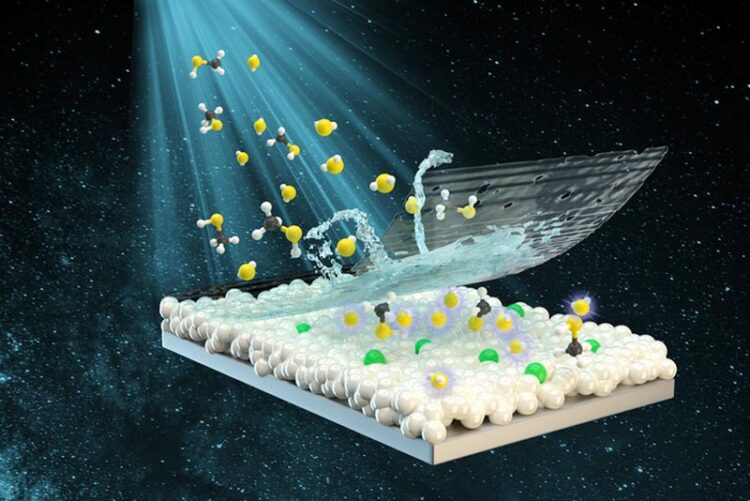Hydrophobic molecular sieve

Bifunctional role of PDMS membrane in designing H2S sensors —humidity resistant and selectivity improved.
Credit: ZHANG Ruofan
… developed for humidity-resistance hydrogen sulfide sensor.
A research team led by Prof. MENG Gang, from Hefei Institutes of Physical Science (HFIPS), Chinese Academy of Sciences (CAS) used polydimethylsiloxane (PDMS) in the research of high-performance humidity-resistance hydrogen sulfide (H2S) sensors, offering an avenue for the practical applications of H2S chemiresistors in an ambient humid air atmosphere.
The results were published in ACS Applied Materials & Interfaces and Chemical Communication, respectively.
H2S is a colorless, flammable, explosive, highly corrosive, and highly toxic gas, which widely exists in semi-closed and high-humidity locations. Some oxides including delafossite, ZnO, and CuO have a high response to H2S in dry air, but the humidity tends to interfere with the response of sensors. In addition, H2S is a highly corrosive gas, and its corrosiveness increases with the increase of humidity. This leads to rapid corrosion and degradation of sensors in high humidity environments, which becomes an important challenge for the practical application of sensors.
In order to solve these problems, scientists evaporated a hydrophobic and semipermeable membrane of polydimethylsiloxane (PDMS) on the Pt single-atom anchored CuCrO2 by the thermal evaporation method.
ZHANG Ruofan, first author of the paper, described the biofunctional role of PDMS as “killing two birds with one stone.”
PDMS had hydrophobic nature. It could effectively isolate the intrusion of water vapor in the environment, weakened the influence of environmental humidity on the sensor, and significantly improved the long-term stability of the sensor in a humid environment.
On the other side, the micropores in the PDMS membrane could effectively block methyl mercaptan (CH3SH) molecules whose diameter was slightly larger than H2S. It acted as a “molecular sieve”, further improving the selectivity of the sensor for H2S.
The humidity-resistant H2S sensor based on PDMS-coated CuCrO2 had a low operating temperature (100 ℃), high response (up to 151 for 5 ppm H2S at 50% relative humidity), high selectivity, and good long-term stability, which laid an important foundation for the practical application of H2S sensor in petrochemical, natural gas, and other fields.
Journal: Chemical Communications
Article Title: Bifunctional role of PDMS membrane in designing humidity-tolerant H2S chemiresistors with high selectivity
Article Publication Date: 16-Jan-2023
Media Contact
Weiwei Zhao
Hefei Institutes of Physical Science, Chinese Academy of Sciences
annyzhao@ipp.ac.cn
Office: 86-551-655-91206
Original Source
https://english.hf.cas.cn/nr/bth/202302/t20230221_327499.html
Media Contact
All latest news from the category: Life Sciences and Chemistry
Articles and reports from the Life Sciences and chemistry area deal with applied and basic research into modern biology, chemistry and human medicine.
Valuable information can be found on a range of life sciences fields including bacteriology, biochemistry, bionics, bioinformatics, biophysics, biotechnology, genetics, geobotany, human biology, marine biology, microbiology, molecular biology, cellular biology, zoology, bioinorganic chemistry, microchemistry and environmental chemistry.
Newest articles

Pinpointing hydrogen isotopes in titanium hydride nanofilms
Although it is the smallest and lightest atom, hydrogen can have a big impact by infiltrating other materials and affecting their properties, such as superconductivity and metal-insulator-transitions. Now, researchers from…

A new way of entangling light and sound
For a wide variety of emerging quantum technologies, such as secure quantum communications and quantum computing, quantum entanglement is a prerequisite. Scientists at the Max-Planck-Institute for the Science of Light…

Telescope for NASA’s Roman Mission complete, delivered to Goddard
NASA’s Nancy Grace Roman Space Telescope is one giant step closer to unlocking the mysteries of the universe. The mission has now received its final major delivery: the Optical Telescope…



